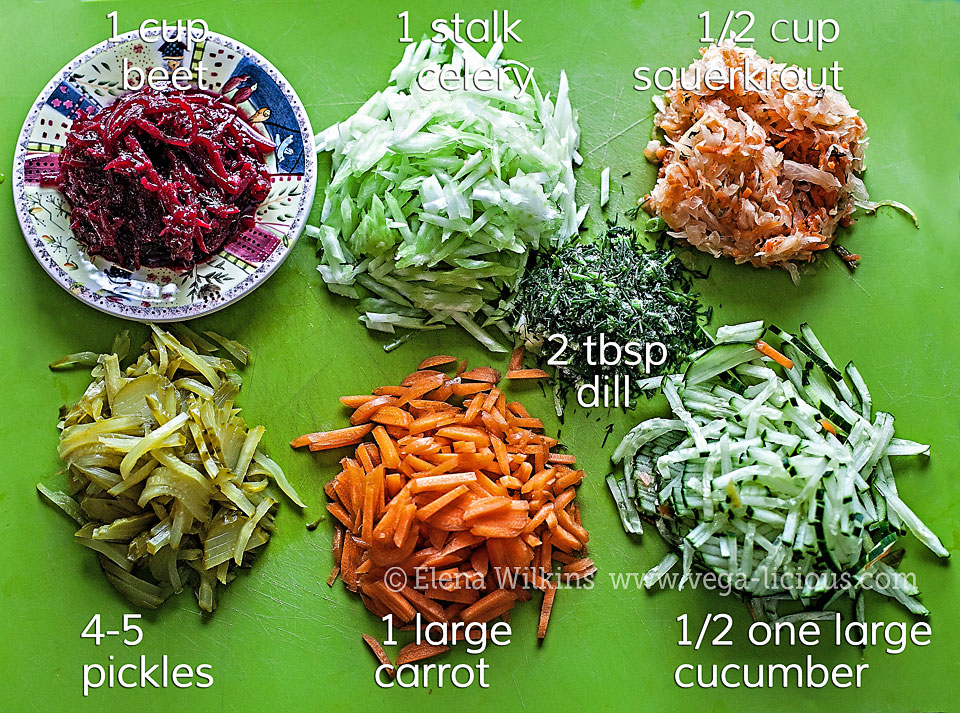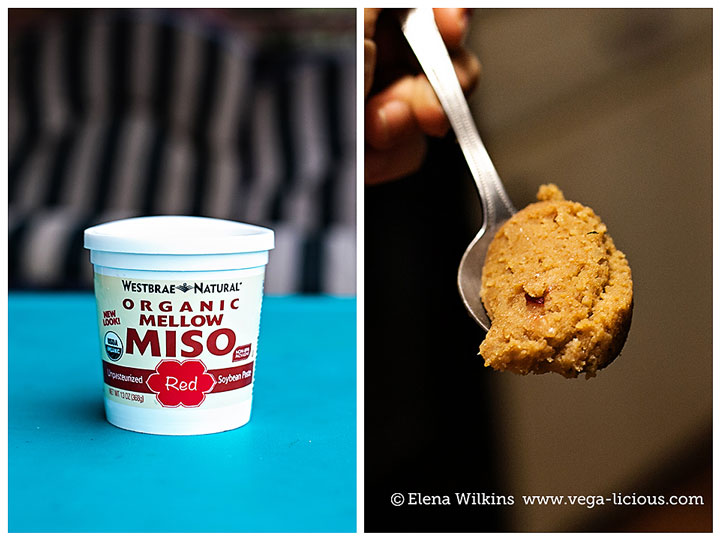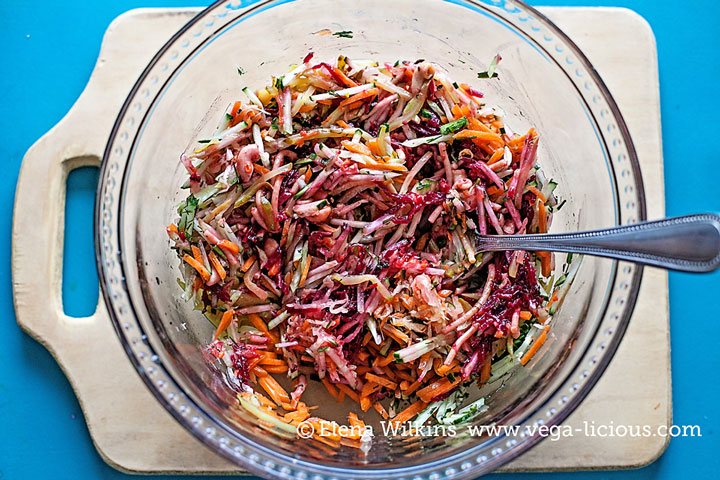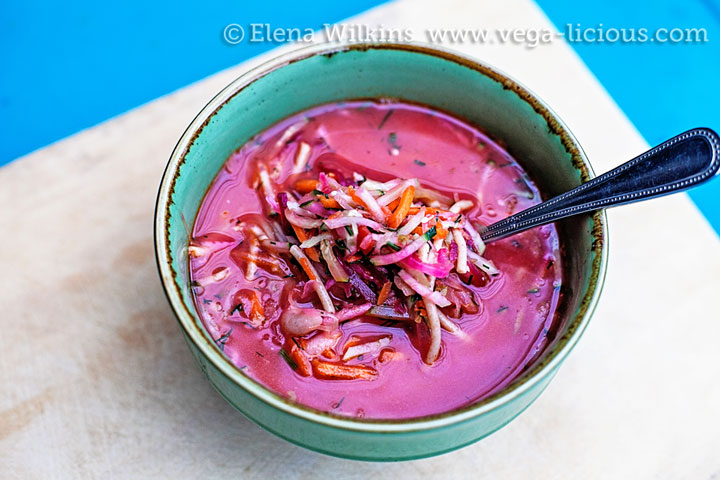
I covered the benefits of fermented foods in the past in detail, so, today I will highlight only a few benefits and then share a great, easy to make miso soup recipe, filled with fermented, probiotic rich ingredients, which takes less than 10 minutes to make.
Fermented foods introduce beneficial bacteria into our gut flora. While they will not replace prescription strength probiotics for those who need a good probiotic treatment, they are great for those who are in generally good health for keeping beneficial gut bacteria populated. Fermented foods are also great for strengthening and supporting our digestive and immune systems, helping our bodies to fight off and prevent diseases. Fermented products are a great source of amino acids, vitamins, and minerals.
Good bacteria, which can be found in fermented foods, inhibits harmful microorganisms, fighting off infections and helping our bodies to detoxify.
Gut health begins at birth. When a child passes through her mother’s birth canal, her digestive system immediately fills with trillions of bacteria (thank you, Mom!); with more being added through regular breastfeeding, especially at the breast (as compared to bottle-fed breast milk)–thank you, Mom! In fact, C-section and formula-fed babies are at a disadvantage for this very reason and should go through probiotic treatment to make up what they lack otherwise. But, you can learn all about this in Everything you should know about Probiotics and Gut Health eCourse.
In addition to C-sections and bottle feeding, SAD (Standard American Diet), along with over-cleaning our foods, does not only lack good bacteria, it also is very effective at destroying it. Add to it the use of antibiotics and certain medications, such as anti-inflammatories, acid-blocking drugs and prescription birth control, and you might wipe out most of the good bacteria colonies, damaging your gut and blocking normal digestive function. When that happens, all kinds of health problems ensue–bloating, constipation, diarrhea, bloody stools, irritable bowel syndrome, inflammatory bowel disease, propensity to getting sick, low or no immune function, acne and many other unpleasant health problems. Those who experience such health issues will need to change their diet, similar to or exactly what I am teaching in Body by Plants (some will have to have it modified, depending on the severity of their health problem), and go through a probiotic treatment to replenish their good bacteria to begin feeling better.
For the rest of us, who already have happy bellies, adding fermented foods to our diet is the best way to ensure that we always have more of the “good guys” than the bad in our gut.
About Miso
Miso is a traditional Japanese seasoning. Miso is produced by fermenting soybean, barley, brown rice, or other grains with a type of fungus known as koji. The fermentation process can take anywhere from a few days to a couple of years to complete and the end result is a red, white or dark brown colored paste with a buttery texture. The darker the color of the miso, the stronger the flavor. Miso is increasingly available not only is specialty food stores, but in major food chain stores as well. You can find them in most health food sections at your grocery stores.
Miso Benefits
- Great source of protein. It contains all essential amino acids (much like the rest of plant foods)
- Restores beneficial gut flora.
- Aids in the digestion and assimilation of other foods in the intestines.
- Rich in vitamins and minerals, such as copper, manganese, vitamin K, zinc, phosphorus, choline, B vitamins.
- Reduces risk for breast, prostate, lung and colon cancers.
- Protects against radiation* due to dipilocolonic acid, an alkaloid that chelates heavy metals and discharges them from the body.
- Strengthens the immune system.
- High in antioxidants that protect against free radicals.
The longer the period of fermentation for miso, the more beneficial properties it has.
*A few years ago I read a story about miso that encouraged me to add it to my regular dietary intake.
At the time of the world’s first plutonium atomic bombing, on August 9, 1945, two hospitals were literally in the shadow of the blast, about one mile from the epicenter in Nagasaki. American scientists declared the area totally uninhabitable for 75 years. At University Hospital 3000 patients suffered greatly from leukemia and disfiguring radiation burns. This hospital served its patients a modern fare of sugar, white rice, and refined white flour products. Another hospital was St. Francis Hospital, under the direction of Shinichiro Akizuki, M.D. Although this hospital was located even closer to the blast’s epicenter than the first, none of the workers or patients suffered from radiation sickness. Dr. Akizuki had been feeding his patients and workers brown rice, miso soup, vegetables and seaweed every day. The Roman Catholic Church—and the residents of Nagasaki—called this a modern day miracle. Meanwhile, Dr. Akizuki and his co-workers disregarded the American warning and continued going around the city of Nagasaki in straw sandals visiting the sick in their homes. (source)
While miso does come with an array of benefits, in itself it is not a magic food. If the rest of the diet is filled with junk, too much animal ingredients, and sugar, miso, by itself, will not put a dent in health issues they create. This is very evident in the story you just read. Miso was served along with brown rice, vegetables and seaweed when it was effective. If it were to be added to refined products and sugar, I doubt that the results would have been the same. In fact a recent study that looked at potential benefits of consuming miso (prevention of radiation injury, cancer and hypertension prevention/reduction), concluded that as the Japanese diet shifted
from a traditional Japanese to Western style, cancers of the large intestine, breast and prostate are increasing… This indicates that the importance of diet and traditional food such as miso soup should be reevaluated not only in Japan but across the world. (source)
So, if you are looking to improve your health, first improve your diet, then make sure to add probiotic rich foods, such as miso, sauerkraut, kimchi, etc., to it.
Now, without further ado, here is my go-to probiotic soup. I personally make it ahead of time, sometimes enough for the entire day, and then enjoy it, warm or cold, as I get hungry. The recipe is very low in calories, so do not be surprised if you eat a couple of servings in one setting. It is also very warming, since I use hot water to make it, which is perfect during the cold months, while you will still get a boatload of raw goodness in it.
- sharp knife, and/or
- mandolin
- cutting board
- large mixing bowl
- measuring cup
- spoon or spatula
- ½ cup raw sauerkraut
- 1 cup of fresh, fermented orwater sauteed julienned beet root
- 1 stalk julienned celery
- 4-5 small-medium size julienned pickles
- 1 large (2 small) julienned carrot
- ½ large julienned cucumber
- 2 tbsp chopped fresh or frozen chopped dill
- any other ingredient of your choice, raw or cooked. I had 1 cup of whole wheat pasta leftovers from last night’s dinner, so I used it in my recipe. You can add potatoes, or any other vegetable of your choice.
- 3 heaping tbsp miso paste. You can pick from white, red or brown miso. I used red in this recipe.
- 4 cups of filtered hot water
- julienne vegetables with a knife, or with a mandolin (my favorite time saving kitchen tool)
- combine all vegetables and dill in a bowl
- mix miso paste with ½ cup of water until dissolved; add to the bowl
- add remaining 3.5 cups of hot water to the mix
- stir and enjoy
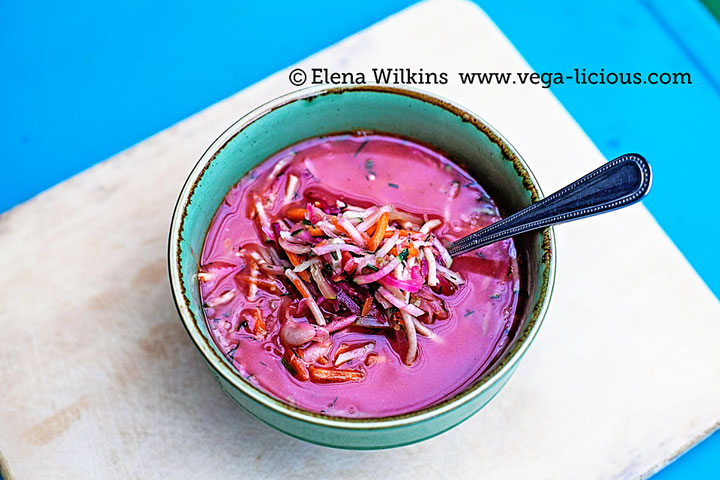
Make it, share it, take pictures of it; come back and tell me how you liked this delicious, convenient, probiotic rich recipe.
